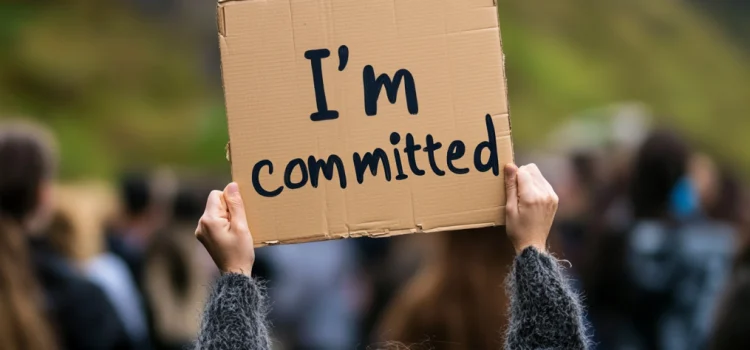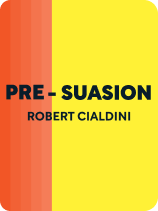

This article is an excerpt from the Shortform book guide to "Pre-Suasion" by Robert Cialdini. Shortform has the world's best summaries and analyses of books you should be reading.
Like this article? Sign up for a free trial here.
Do you want to influence change in others? Are you curious about the psychology behind lasting behavioral shifts?
In his book Pre-Suasion, Robert Cialdini explores how to create enduring impact through pre-suasive techniques. He emphasizes the importance of eliciting commitments to cement behavioral changes and shift long-term beliefs.
Keep reading to discover how to influence change and make it stick.
How to Influence Change
Cialdini acknowledges that, although the pre-suasive techniques he outlines in his book might lead to short-term behavioral changes, they’re often insufficient to effect long-term change. Consequently, we’ll explain how to influence change and make it last by eliciting concrete commitments from your audience.
Cialdini explains that, to generate long-term shifts in behavior, you should elicit a concrete commitment from your audience. To illustrate the impact of such commitments, Cialdini points to several studies showing that small commitments can cement behavioral changes.
For instance, in one study of medical clinics, experts sought to determine how to increase the percentage of patients who show up for scheduled follow-up appointments. They found that the most successful approach involved asking patients to write down the details of these follow-up appointments themselves, rather than having the receptionist do so. Cialdini explains that, in so doing, the patients were making a small commitment that made them 18% more likely to attend their follow-up appointments.
(Shortform note: Another medical clinic found an innovative way to minimize no-shows by placing frequent no-showers on scheduling probation. During this probationary period, the patients were still able to schedule appointments, but doctors would only see them during breaks from other patients rather than at fixed times. For example, if the patients on probation scheduled an appointment at 2 p.m. and arrived for their appointment, they would enter a queue behind the other patients scheduled at 2:00 and be seen as soon as the doctors had an opening. The clinic found that this practice reduced no-shows, which suggests that you can also change behavior by enforcing commitment via consequences for broken commitments.)
Cialdini relates that, in addition to shifting behaviors, commitments can also shift long-term beliefs. For example, in one experiment, researchers exposed participants to a happy story. They then asked one group of participants to rate a painting and another group to observe the painting. Five days later, only those who’d rated the painting reported preferring it to other paintings, suggesting that the commitment of rating the painting positively made their positive opinion of it more entrenched.
(Shortform note: The 17th-century French philosopher Blaise Pascal recognized long ago that commitments can shape our beliefs. Pascal argued that religious belief is rational in a practical sense because it has the highest expected utility (in other words, if God does turn out to exist, the cost of not believing could be spending an eternity in Hell instead of Heaven. But, if God doesn’t exist, the cost of believing isn’t anywhere near so high). Pascal recognized that many people feel they can’t believe in a deity, even if they wanted to. To such individuals, he advised making concrete commitments—such as attending mass, taking communion, and praying—because he recognized that such commitments can induce changes in belief.)
Cialdini suggests that, following a successful instance of pre-suasion, you should elicit some form of commitment to maximize the chance of effecting lasting change. For example, local politicians at a rally might elicit verbal commitments from their constituents that they’ll vote for them in the next election, unlike the majority of voters who never vote in local elections. Likewise, bosses could ask their employees via email for a commitment to finish a project by a certain deadline. In either case, securing a commitment is the crucial step after you’ve finished the pre-suasive process.
(Shortform note: One research study found that an especially effective form of commitment is a public pledge that declares one’s intentions. Among participants who were asked to donate a book to schools in South Africa, those who made a public pledge to donate were significantly more likely to do so than peers who didn’t make a pledge or made one in private.)

———End of Preview———
Like what you just read? Read the rest of the world's best book summary and analysis of Robert Cialdini's "Pre-Suasion" at Shortform.
Here's what you'll find in our full Pre-Suasion summary:
- The moment when people are particularly susceptible to influence
- The first step you should take when you want to persuade someone
- Why a brilliant argument isn’t enough to convince some people






